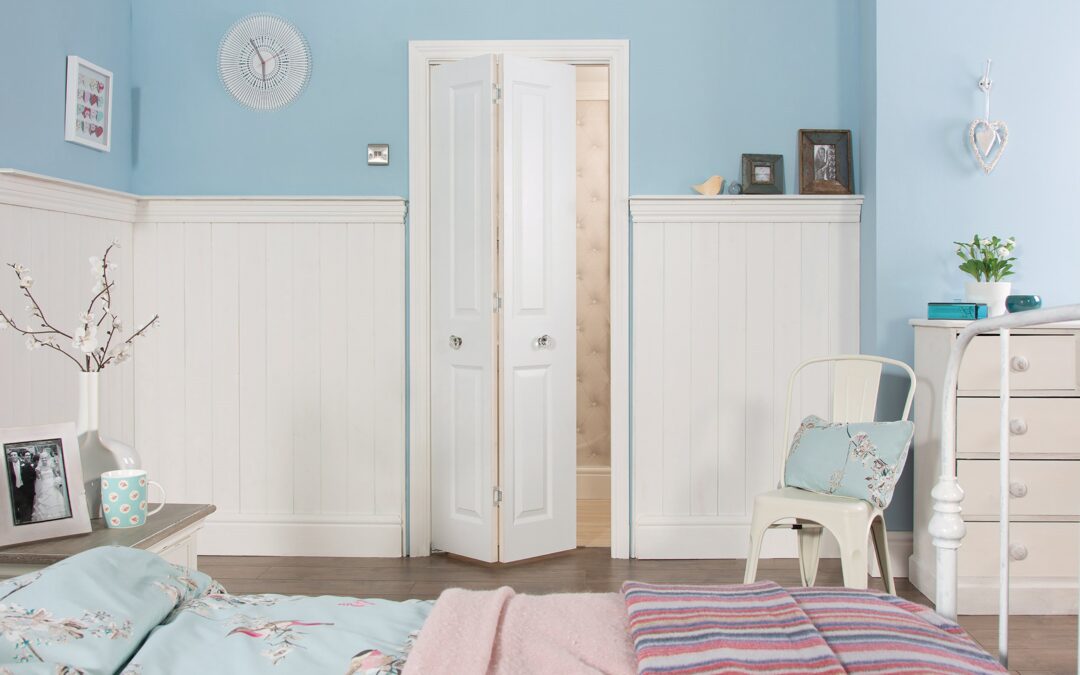In today’s urban living, where space is often at a premium, homeowners and designers are continually seeking innovative solutions to optimize every square inch. One such solution gaining popularity is the use of space-saving doors. These doors not only serve a functional purpose but also contribute to a more efficient and aesthetically pleasing living environment. In this article, we will explore the various types, benefits, and design considerations of space-saving doors that can transform the way we utilize space in our homes.
1. Pocket Doors:
Pocket doors are a classic and effective choice for maximizing space. Unlike traditional swinging doors, pocket doors slide into a concealed pocket within the wall when opened, allowing for unobstructed access between rooms. They are an excellent option for smaller rooms or areas where swing doors may interfere with furniture placement.
2. Sliding Barn Doors:
Sliding barn doors have become a popular design trend that not only adds a rustic touch to a space but also offers space-saving benefits. These doors slide along a track mounted on the wall, eliminating the need for floor space required by swinging doors. Sliding barn doors are versatile and can be used in various settings, from bedrooms to home offices.
3. Bifold Doors:
Bifold doors consist of panels that fold in on themselves, creating a compact stack when open. They are often used for closets, pantries, or as room dividers. Bifold doors are an efficient choice for spaces where a traditional swinging door would take up valuable floor space.
4. Accordion Doors:
Accordion doors are a flexible and space-saving solution that expands and contracts like an accordion. They are commonly used in areas where versatility is essential, such as dividing a large room into smaller sections. Accordion doors are available in various materials and styles, making them suitable for both residential and commercial applications.
5. Dutch Doors:
Dutch doors, with their unique split design, offer a charming and functional way to save space. The top and bottom halves of the door can be operated independently, allowing for increased ventilation while maintaining a barrier. Dutch doors are well-suited for kitchens, children’s play areas, or as an entry door.
6. Pivot Doors:
Pivot doors rotate on a central pivot point, eliminating the need for traditional hinges and creating a sleek and modern appearance. Pivot doors can be a space-saving option, especially in areas with limited wall space for door swings. They are often used as grand entrance doors or in contemporary interior designs.
7. Folding Glass Doors:
Folding glass doors, also known as accordion or bi-fold glass doors, seamlessly blend indoor and outdoor spaces. These doors consist of multiple panels that fold and stack against one another, creating an open and airy atmosphere. Folding glass doors are ideal for connecting living spaces to patios, decks, or gardens, maximizing the feeling of space.
8. Wall-Mounted Sliding Doors:
Wall-mounted sliding doors are an innovative solution that combines the benefits of sliding doors with space-saving wall-mounted hardware. These doors glide along a wall-mounted track, eliminating the need for a floor track and providing a clean and modern aesthetic. Wall-mounted sliding doors are suitable for various applications, including closets and room dividers.
9. Hidden Bookcase Doors:
For a truly discreet and space-saving solution, hidden bookcase doors offer a clever and stylish option. These doors function as a bookshelf or storage unit when closed, seamlessly blending into the surrounding wall. When opened, they reveal an entrance or passageway, adding an element of surprise and intrigue to the space.
10. Considerations for Design:
When incorporating space-saving doors into your home, consider the following design aspects:
- Material and Style: Choose a door material and style that complements the overall design theme of your home. Whether you opt for rustic barn doors, sleek glass panels, or minimalist pivot doors, the material and style should align with your aesthetic preferences.
- Hardware and Track Systems: Select high-quality hardware and track systems for smooth and reliable operation. Wall-mounted tracks, concealed hinges, and durable rollers contribute to the longevity and functionality of space-saving doors.
- Color and Finish: The color and finish of the doors should harmonize with the surrounding décor. Whether you prefer a natural wood finish, a bold paint color, or a sleek metallic finish, ensure that it enhances the visual appeal of the space.
- Space Planning: Consider the layout of the room and how the space-saving door will integrate with existing furniture and fixtures. Ensure that the chosen door type complements the flow and functionality of the space.
- Professional Installation: For optimal performance and longevity, seek professional installation for space-saving doors. Proper installation ensures that the doors operate smoothly and align with the highest standards of safety and functionality.
11. Benefits of Space-Saving Doors:
- Optimized Floor Space: Space-saving doors eliminate the need for door swings, allowing for more efficient use of floor space.
- Enhanced Aesthetics: These doors contribute to a clean and modern aesthetic, reducing visual clutter and promoting a streamlined look.
- Improved Traffic Flow: In high-traffic areas, space-saving doors facilitate a smoother flow of movement, especially in smaller rooms or narrow hallways.
- Increased Versatility: Many space-saving doors are versatile and adaptable, serving multiple functions such as room dividers or movable partitions.
- Natural Light and Ventilation: Doors with glass panels, such as sliding or folding glass doors, maximize natural light and ventilation, creating a brighter and more open atmosphere.
Conclusion:
Space-saving doors offer a practical and stylish solution for optimizing living spaces, especially in homes where square footage is limited. Whether you choose sliding, folding, or innovative hidden doors, the benefits extend beyond mere functionality to include enhanced aesthetics and improved spatial efficiency. By carefully considering design elements, material choices, and professional installation, homeowners can transform their living spaces into more versatile and visually appealing environments, embracing the concept that great design can indeed make the most of any space.

